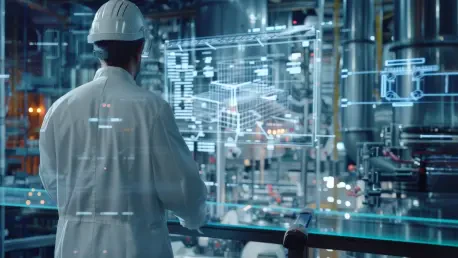Recent advisories from the Cybersecurity and Infrastructure Security Agency (CISA) have raised significant concerns over cybersecurity vulnerabilities in industrial automation products from Schneider Electric and Mitsubishi Electric. Issued on June 3, these advisories underline the severe security issues that can lead to remote code execution, authentication bypass, and denial-of-service attacks. These vulnerabilities have profound implications for critical infrastructure segments, including energy, commercial facilities, and manufacturing sectors. Organizations worldwide face serious risks, with Common Vulnerability Scoring System (CVSS) scores ranging from 4.6 to 9.3, demonstrating various levels of severity. Some vulnerabilities exhibit low attack complexity and are remotely exploitable, posing an immediate threat to operational technologies employed widely across industries.
Schneider Electric Vulnerabilities
Wiser Products Buffer Overflow
Among the most pressing vulnerabilities is the buffer overflow issue identified within Schneider Electric’s Wiser series products—specifically, the Wiser AvatarOn Freelocate and Wiser Cuadro H Socket lines. This flaw, designated as CVE-2023-4041 and bearing a CVSS score of 9.3, has been traced back to its handling of data operations, classifying it under CWE-120. Unfortunately, these vulnerable products have reached their end-of-life stage, creating constraints regarding viable fixes or direct resolution methods. Limited mitigation strategies include disabling firmware updates or entirely removing the afflicted devices from operations. The urgency of addressing this concern cannot be overstated, given the potential implications for critical infrastructure stability and ongoing functionality. Corporations leveraging these products are urged to assess their cybersecurity practices and execute preventive measures to mitigate fallout from these vulnerabilities.
EcoStruxure Software Vulnerability
Another critical flaw within Schneider Electric’s products pertains to the EcoStruxure Power Build Rapsody software, linked to CVE-2025-3916. This vulnerability, categorized as a stack-based buffer overflow issue under CWE-121, grants local attackers the ability to execute arbitrary code through weaponized files. Unlike the Wiser series issue, this flaw comes with a lower CVSS rating at 4.6, yet it maintains substantial risk metrics, particularly for energy sector organizations utilizing the software. The advisory issued recommends immediate software updates and system restart protocols to curb potential exploits. Energy companies integrating the EcoStruxure platform must prioritize updating their systems and ensuring comprehensive security protocols to fortify themselves against this weakness. With increasing threats aimed at the energy sector, proactive measures to prevent unauthorized access remain crucial to safeguarding complex operations.
Mitsubishi Electric Security Concerns
MELSEC Controller Vulnerabilities
The vulnerability detected in Mitsubishi Electric’s MELSEC iQ-F Series controllers presents another severe threat landscape with CVE-2025-3755, possessing a CVSS score of 9.1. This challenge arises from improper validation practices denoted by CWE-1285, enabling attackers to potentially infiltrate sensitive information databases or disrupt predominant operational configurations. Deploying specifically crafted network packets forms the foundational method of exploitation, highlighting risks around network accessibility and data transmission integrity. Addressing this requires comprehensive network segmentation practices alongside strategic firewall and VPN utilization. Furthermore, implementing IP filtering and restricting physical device access are essential protocols to bolster security. Industries relying on these controllers are now advised to reassess their infrastructure security frameworks and adopt elevated cybersecurity protocols to counteract these vulnerabilities effectively.
Mitigation and Future Strategies
Mitigation strategies must encompass both technological updates and organizational preparedness, ensuring holistic protection across industrial automation landscapes. The advisories underscore the necessity for fortified defenses and robust security networks to tackle these emergent challenges. Increased focus on employee training regarding cybersecurity best practices, in conjunction with enhanced monitoring of network traffic, will establish a sturdy defense line against potential infiltrations. As industries evolve and adopt more interconnected systems, aligning cybersecurity measures with technological growth becomes imperative to maintain heightened security levels across operational infrastructures. Organizations investing in innovative solutions for improved hazard detection and response are better positioned to address vulnerabilities proactively and maintain secure environments against dynamic threat landscapes.
Imperative Cybersecurity Measures
As threats to industrial control systems evolve, strong cybersecurity measures are crucial for safeguarding critical infrastructure globally. Addressing vulnerabilities is central to maintaining operations in affected sectors. Organizations need to boost their understanding of cybersecurity practices, leveraging technological progress to strengthen their systems against breaches. Implementing proper mitigation strategies can minimize risk exposure and protect assets from unauthorized, disruptive intrusions. Advisories stress that risk management strategies should become integral to industry protocols, ensuring sensitive data protection and operational continuity across crucial segments. The collective effort towards enhanced security frameworks remains vital in effectively tackling these vulnerabilities.
Organizations, along with industry leaders, must promptly and rigorously secure their systems, elevating cybersecurity maturity and readiness against evolving threats. Greater collaboration between agencies like CISA and industry can spark major advancements in cybersecurity postures. If vulnerabilities are addressed and mitigated, a safer landscape for critical infrastructure emerges, creating resilient systems capable of preventing exposures and safeguarding sustainable operations for the future.









